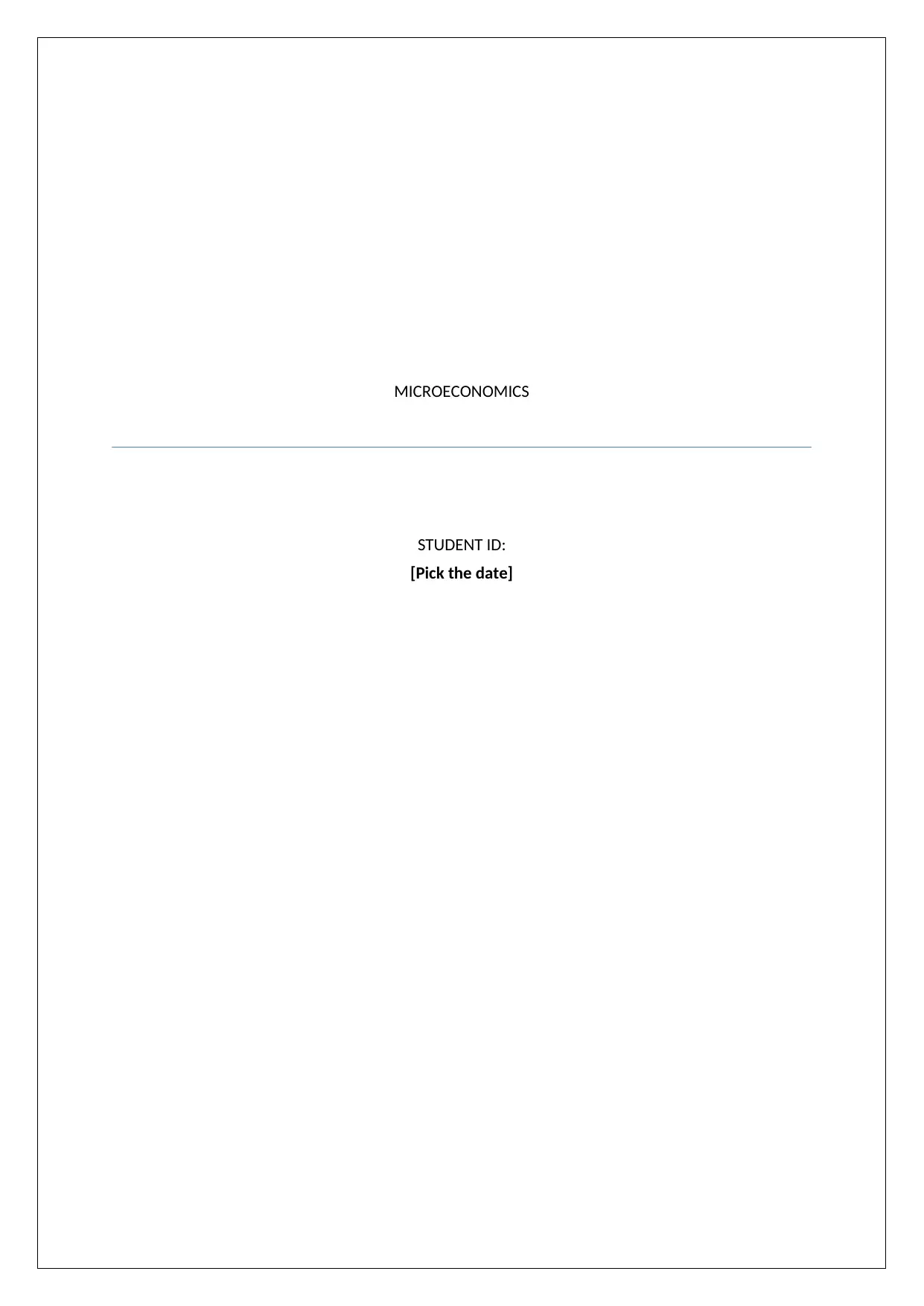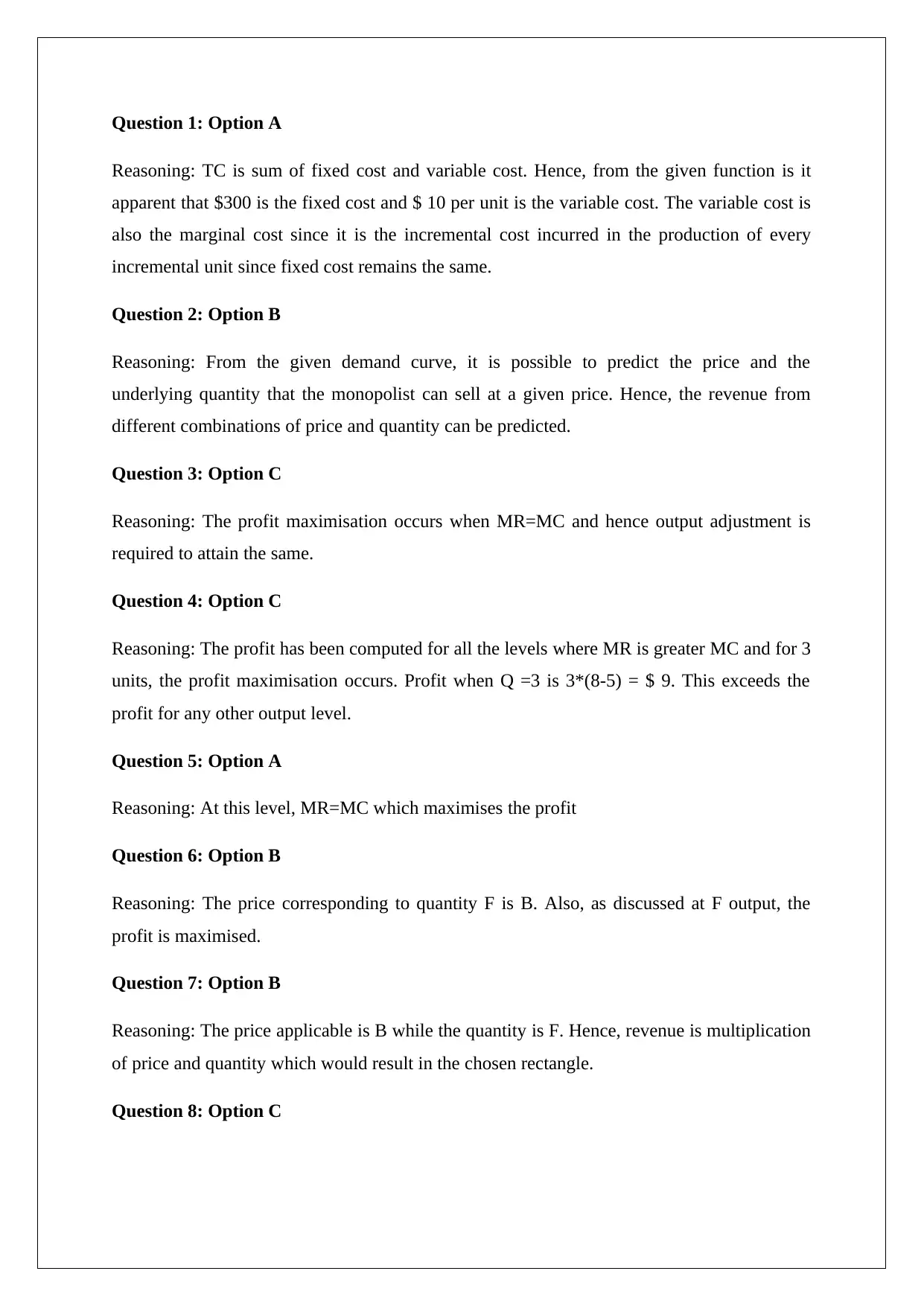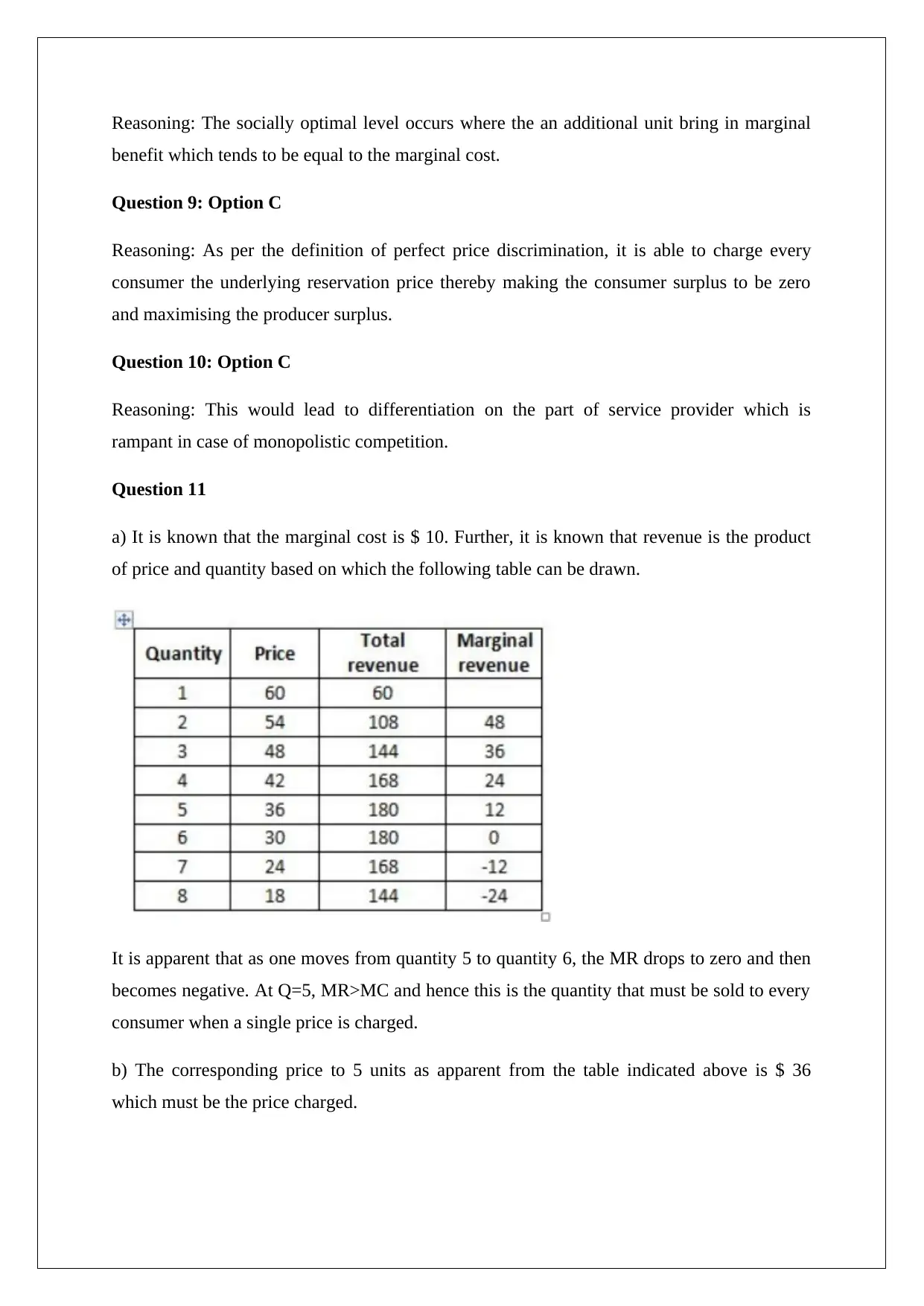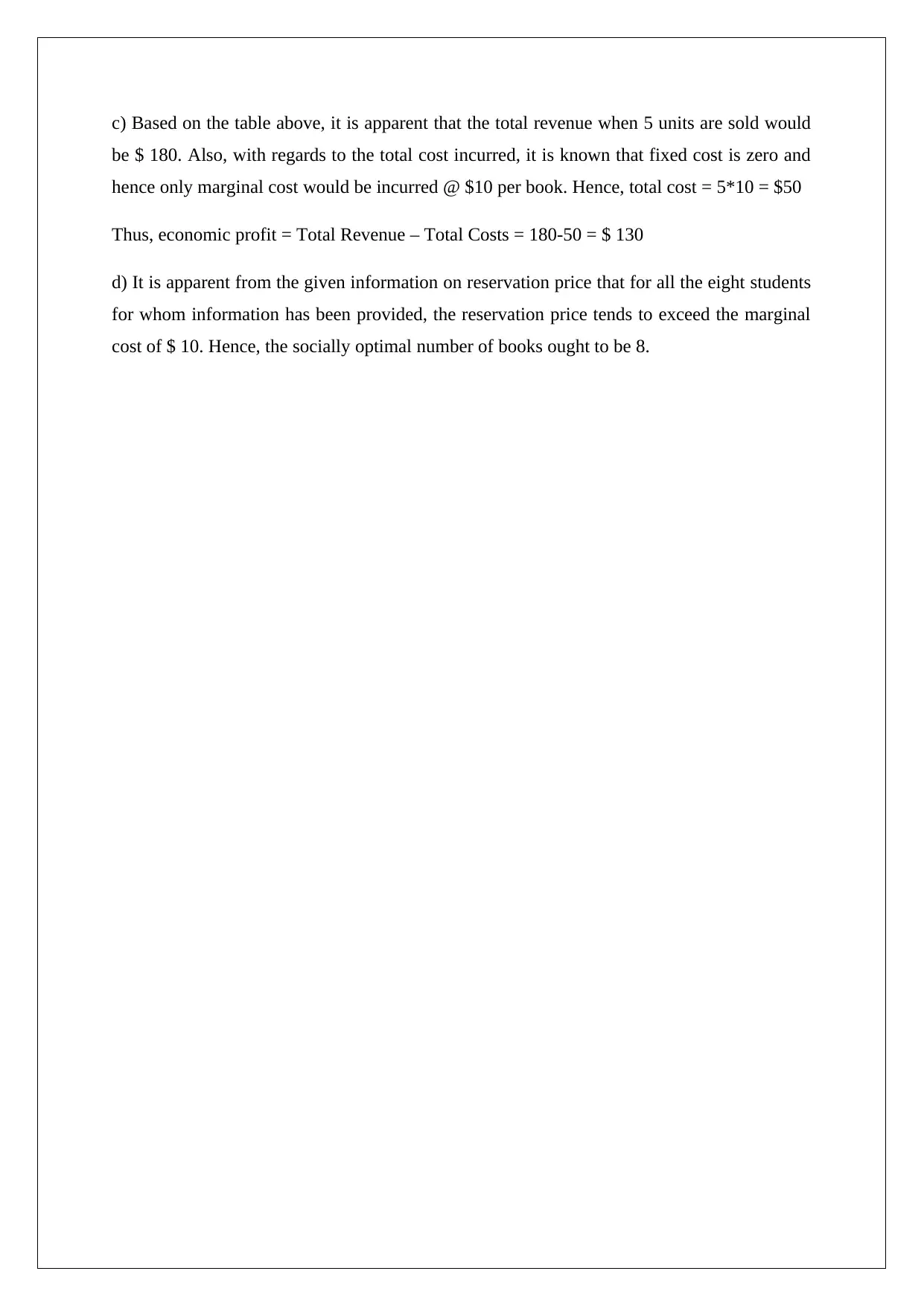Microeconomics Homework: Questions and Answers with Explanations
VerifiedAdded on 2023/05/30
|4
|635
|467
Homework Assignment
AI Summary
This microeconomics assignment provides solutions to a series of multiple-choice questions and a problem related to cost functions, profit maximization, and pricing strategies. The multiple-choice questions cover topics such as fixed and marginal costs, monopolist behavior, profit maximization conditions (MR=MC), and price discrimination. The problem involves calculating the optimal quantity and price for a firm with a given marginal cost and demand schedule, determining economic profit, and analyzing the socially optimal number of books to be sold based on reservation prices. The solutions provide detailed reasoning for each answer, offering a comprehensive understanding of the underlying economic principles.
1 out of 4











![[object Object]](/_next/static/media/star-bottom.7253800d.svg)